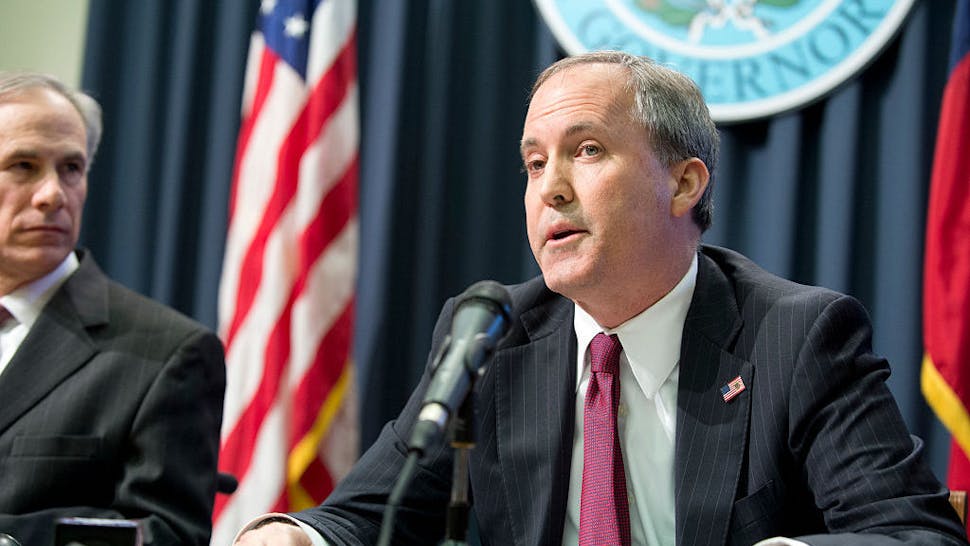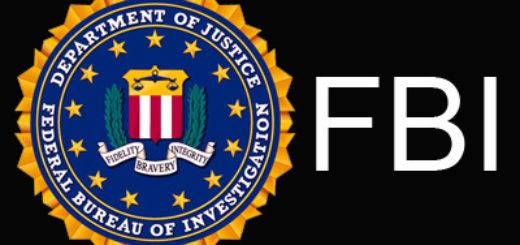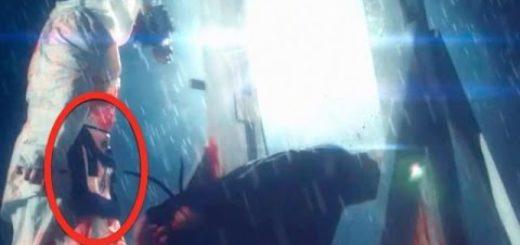Supreme Court Rejects Texas Lawsuit v. Four Swing States
Supreme Court Rejects Texas Lawsuit v. Four Swing States
YouTube’s Allies in Censorship: Google, Big Tech and Wall Street
U.S. Incentivizes Morocco’s Normalization with Israel
This article appears in the December 11, 2020 issue of Executive Intelligence Review.
Behind the Assassination of an Iranian Nuclear Scientist:
a British-Nazi Network
by Carl Osgood
[Print version of this article]
Dec. 4—The November 27 assassination of the Iranian nuclear scientist, Dr. Mohsen Fakhrizadeh, was the most serious escalation between the U.S. and Israel on one side and Iran on the other so far, since the U.S. assassination by drone of Iranian General Qasem Soleimani on January 3, 2020. In her message included above, Helga Zepp-LaRouche has warned that this terrorist action could be a trap aimed at drawing President Trump into a disastrous war.
While details of the attack on Fakhrizadeh’s three-vehicle convoy are not clear—the latest Iranian account has it that the attack was done by remote control—it is clear that the attack was the result of a longstanding and meticulously planned operation that was expertly executed. As of this writing, no one has claimed responsibility for the attack. Iranian suspicions immediately fell on Israel with possible U.S. involvement. While Israel has made no official statements on the assassination, Israeli officials have also done little to deflect the suspicions. Fakrizadeh did not have a high public profile but was long suspected to have headed Iran’s nuclear weapons program, known as Project Amad, from 1989 to 2003, when, according to U.S. intelligence assessments, it had been closed down.
After news of the assassination broke, the Times of Israel republished the speech that Israeli Prime Minister Benjamin Netanyahu had delivered on April 30, 2018, the day that Israel revealed the Iranian nuclear archive that the Mossad had claimed to have stolen from a warehouse in Tehran. In that speech, Netanyahu pointed to a directive signed by Fakhrizadeh:
Remember that name, Fakhrizadeh. His directive says: “The general aim is to announce the closure of Project Amad,” but then he adds, “Special activities will be carried out under the title of scientific know-how developments.” And in fact, this is exactly what Iran proceeded to do. It continued this work in a series of organizations over the years, and today, in 2018, this work is carried out by SPND, that’s an organization inside Iran’s Defense Ministry. And you will not be surprised to hear that SPND is led by the same person that led Project Amad, Dr. Fakhrizadeh. And also, not coincidentally, many of SPND’s key personnel worked under Fakhrizadeh on Project Amad.
Fakrizadeh was the head of the SPND when he was killed.
Also making no official comment on the killing of Fakrizadeh was the Trump Administration. The New York Times, however, cited three unnamed administration officials, including two intelligence officials, confirming that Israel was behind the assassination:
Some American officials argued that the death of Mr. Fakhrizadeh, the latest in a string of such mysterious killings of Iran’s top nuclear scientists, would send a chilling message to the country’s other top scientists working on that program: If we can get him, we can get you, too.MSCMohamed Javad Zarif, Foreign Minister of Iran, called on the international community to condemn the assassination of Fakhrizadeh.
In Iran, great anger erupted in response to the terrorist assassination. Many people saw Fakhrizadeh’s killing not just as an attack on one man, albeit one of Iran’s greatest scientists, but as an attack on Iranian science itself. Iranian Foreign Minister Mohamed Javad Zarif wrote this in his Twitter account:
Terrorists murdered an eminent Iranian scientist today. This cowardice—with serious indications of Israeli role—shows desperate warmongering of perpetrators. Iran calls on int’l community—and especially EU—to end their shameful double standards & condemn this act of state terror.
Iranian President Hassan Rouhani vowed:
The Iranian nation is so courageous and zealous that it won’t allow the crime to remain unanswered, [but will respond] at the appropriate time.
Other Iranian officials noted that Fakhrizadeh had been playing a key role in Iran’s battle against the coronavirus pandemic, which has killed about 50,000 Iranians.
Israel’s Bloody History of Assassinations
The “string” of mysterious killings that the Times referred to is the violent killings of about a half dozen nuclear scientists in Iran in the 2010-2012 time period, all also attributed to Israel. Israel’s history of assassinating those it considers enemies of the Israeli state goes back, in fact, much further, to at least the early 1960s.
A lengthy article in Ha’aretz published in March 2016, provides a window into one of these cases and offers some useful insight.
The Ha’aretz account focused on a German rocket scientist by the name of Heinz Krug who was working for Egypt as part of an Egyptian project to develop advanced weapons for its military. One day, September 11, 1962, he went to his office in Munich but never came home.ANeFoOtto Skorzeny, a Nazi Waffen-SS Lt. Colonel during World War II, was hired by the Mossad to kill the German rocket scientist Heinz Krug in 1962.
The story, as retailed to Ha’aretz by anonymous Israeli intelligence veterans and reflected in archival documents, was that Krug was the victim of an Israeli assassination plot in which the trigger-man was none other than Otto Skorzeny, who had been Hitler’s favorite commando during World War II. The hiring of Skorzeny by the Mossad seems bizarre on its face. The sources for the Ha’aretz article chalk it up to pragmatism, however.
Despite the two sides’ distaste for each other—among other things, Skorzeny was a notorious killer of Jews—the Mossad concluded that Skorzeny had the skill set it needed, and Skorzeny was reportedly thrilled at being given a challenging mission.IDFRafael Eytan, one of Otto Skorzeny’s controllers.
One of Skorzeny’s controllers, the Ha’aretz report revealed, was Rafael Eytan, a veteran of decades of dirty Israeli intelligence operations, including kidnappings, murders, and terrorist attacks, and a long-time close associate of Ariel Sharon. Eytan was also suspected of running the spy ring that employed Jonathan Pollard. “Yes, I met and ran Skorzeny,” Eytan confirmed to the authors of the Ha’aretz report.
Benjamin Netanyahu and Vladimir Jabotinsky
Benjamin Netanyahu is a direct descendant of the Sharon-Eytan networks. The Likud Party of Ariel Sharon and Netanyahu today, originated with Vladimir Jabotinsky, who was such an admirer of the Nazis that Israel’s founding statesman, David Ben-Gurion, called him “Vladimir Hitler.” Netanyahu’s father, Ben-Zion Netanyahu, was the personal secretary for Jabotinsky. Both the Nazis and the Zionists of the Jabotinsky variety came from the same mother, uniquely identified as the British Empire by EIR founder Lyndon LaRouche.Left: Government Press Office of Israel; right: Chatham HouseBenjamin Netanyahu, Israel’s current Prime Minister (right), is a true continuation of the avowed fascist Ze’ev (Vladimir) Jabotinsky (left), a product of the Russian pogroms and the Russian secret police, the Tsarist Okhrana.
In an April 22, 1997 interview with the weekly radio program EIR Talks,, LaRouche characterized Netanyahu as entirely a British asset:
Entirely. Even though he is largely financed, he and his goons, out of Brooklyn, New York. But, nonetheless, as Yitzhak Rabin emphasized just before he was assassinated by these goons, and as Mr. Rabin’s widow has emphasized again recently: In the press in Europe, the report is, this week, that the recent experience in dealing with this rogue, Netanyahu, has persuaded the White House—I haven’t verified this myself, but the report is interesting because it responds to reality; I don’t know what the President believes, but I do know what Netanyahu is, and the report says that the President has discovered what Netanyahu is. The argument is that the President has come to understand that Netanyahu is a true continuation of the avowed fascist, Vladimir Jabotinsky, the one who was referred to by a former prime minister of Israel, as “Vladimir Hitler.” Now, Jabotinsky is key in understanding Netanyahu, as is Ariel Sharon.
Jabotinsky was a product of the Russian pogroms, and the Russian secret police, the Tsarist Okhrana. He was turned up as a British agent in the context of the Young Turk operation, which was entirely a London-run operation, through, probably assisted through the B’nai B’rith International lodge of Salonika in what is now Greece. And the Young Turk government was actually a creation of the British Intelligence-controlled International B’nai B’rith lodge in Salonika. Now, this lodge had a publication, which was named in French, because it was the diplomatic language of the time, Jeune Turque. The editor was Vladimir Jabotinsky. Jabotinsky was associated with a fellow, who was later upgraded, Volpi di Misurata, famous as the finance minister who put Mussolini into power. And through Volpi and company, Volpi di Misurata, Jabotinsky, who was the editor of the Young Turks’ ideological magazine in an earlier period, moved on, to become closely associated with Mussolini, and became an avowed Fascist, and the leader of the Fascist movement within Zionism.
Netanyahu is a continuation of that today. You see it in his style. If you understand fascism, particularly the Mussolini variety, the Jabotinsky variety of fascism, you’ll see that Netanyahu’s policy, his style, his way of making decisions, his duplicity—all of these objectionable, obnoxious qualities that make him civet cat of the region. These are truly echoes of the fascism of Mussolini, and Mussolini’s client, Jabotinsky. And if people understand that, they’ll understand why Jabotinsky was called by a prime minister of Israel, Vladimir Hitler, which for any person in the Jewish community, particularly the Zionist community, is very strong language, but very appropriate language. He was Vladimir Hitler.
Timeline of Escalation: From the U.S. Presidential Election to the Killing of Fakhrizadeh
Nov. 11—The Associated Press reports that the International Atomic Energy Agency (IAEA) found that Iran as of November 2 has a stockpile of 2,442.9 kilograms of low-enriched uranium, up from 2,105.4 kilograms reported on August 25. The IAEA reports that Iran is also continuing to enrich uranium to a purity of up to 4.5%, higher than the 3.67% allowed under the deal, but nowhere near the level needed for weapons. IAEA Director General, Rafael Grossi, says in a statement to the UN General Assembly that the agency “continues to verify the non-diversion of nuclear material declared by Iran under its Safeguards Agreement.” Grossi later notes that the uranium enrichment level in advanced centrifuges at Iran’s underground nuclear facility in Natanz is not significantly different from what the IAEA last knew about it. In other words, Iran is not keeping any secrets from the agency.
Nov. 12—Elliott Abrams tells Bloomberg TV that more sanctions will be imposed on Iran before January 20 and also dismisses concerns that Trump may be planning to launch military action against Iran, saying the so-called “maximum pressure” economic strategy had created “an enormous amount of leverage” for the next occupant of the White House.
Nov. 14—The New York Times reports that Abu Muhammed Al-Msari, said to be the second ranking leader of al-Qaeda, was gunned down in his car on a street in Tehran last August. The M.O. of the assassin, the Times notes, was similar to that used in the killings of a number of Iranian scientists in the 2010-2012 time period. In Tehran, Iranian Foreign Ministry spokesman Saeed Khatibzadeh denies the story.
Nov. 15-16—Iraqi Defense Minister Lt. General Juma Anad Saadoun, travels to Tehran on an official visit with a large entourage with the obvious intention of developing Iraq-Iran military relations. According to Iranian news reports, Saadoun meets with all of the top Iranian defense and security officials to discuss a range of topics relating to defense industries, security of the common border, exchange of experiences, training programs, and holding joint military exercises. Saadoun reportedly voices his country’s willingness to take advantage of Iran’s valuable military experience and its technological capabilities in the defense sphere. Plans to sign a military and defense cooperation agreement between Iran and Iraq are revealed.
Nov. 16—The New York Times publishes a story, citing unnamed sources, claiming that on November 12, Trump met with his national security team to seek options for a military strike against Iran’s nuclear program. A range of senior advisers reportedly dissuaded the President from moving ahead with a military strike, the Times said. While elements of the story may be true, it has the whiff of being a provocation itself, like an earlier Times story from late June claiming that Russian military intelligence was paying bounties to the Taliban to kill U.S. troops in Afghanistan.
Foreign Policy reports that the Trump Administration, led by Secretary of State Mike Pompeo, is mulling designating the Houthi movement in Yemen (Ansarallah) a terrorist group. This would have detrimental effects not only on efforts to end the war but also on humanitarian relief efforts in areas controlled by the Houthis. The motivation for such a decision would be not so much the Houthi drone and missile attacks on Saudi Arabia, which are responses to the Saudi bombing campaign in Yemen, but rather the support provided to the Houthis by Iran’s Islamic Revolutionary Guard Corps (IRGC), already designated by the Trump Administration as a terrorist group.
Nov. 18—Iranian Government spokesman Ali Rabiee issues a warning against potential U.S. military strikes on Iran. He says he doesn’t believe the U.S. wants to “cause insecurity in the world and the region [by its actions]. Any action against the Iranian nation would certainly face a crushing response.”
Israel launches a series of air strikes against presumed Iranian targets in Syria. They include an Iranian headquarters at Damascus International Airport and a “secret military site” that served as a “hosting facility for senior Iranian delegations when they come to Syria to operate” and for the 7th Division of the Syrian armed forces, says a spokesman for the Israel Defense Forces.
The U.S. Treasury Department announces new sanctions against the Mostazafan Foundation of Islamic Revolution, a foundation controlled by Supreme Leader Ayatollah Ali Khamenei, as well as against the Iranian minister of intelligence and dozens of other entities and individuals.
U.S. Secretary of State Mike Pompeo issues a press statement, “The Importance of Sanctions on Iran,” bragging about the destructive effect sanctions have had on Iran’s economy, and vowing that the Maximum Pressure campaign will not be relaxed.
Nov. 19—Pompeo lands in Israel for a two-day visit. He meets with Benjamin Netanyahu in Jerusalem and Foreign Minister Gabi Ashkenazi on the Golan Heights, making very inflammatory statements regarding Israel’s rights in these places. Netanyahu gushes praise for the U.S. Maximum Pressure policy on Iran. Pompeo in turn thanks Israel for its support of the policy. Pompeo vows that the U.S. will not relax the sanctions on Iran.
Nov. 20—Associated Press, citing Iraqi sources, reports that Iran has put its allies in the region on alert not to do anything provocative during the next two months, until, as they expect, Joe Biden takes office.
Nov. 21-22—A pair of B-52 bombers takes off from Minot, North Dakota for a round trip flight to the Persian Gulf and back. The fact that the bombers can be followed on popular flight tracking websites suggests that the mission was a show of force and a message to Iran.
Pompeo lands in Baghdad, Iraq threatening more U.S. “measures” against Iraqi Shiite militias aligned with Iran. He does not specify what those measures might be. He makes no reference to the Iraqi defense minister’s visit to Tehran in his public statements. Both Iran and Iraq are currently in serious negotiations with China on “oil for infrastructure” agreements as part of the Belt and Road Initiative. It is likely that Pompeo, aligned with the most fanatic wing of the British and the Likud, is even more interested in sabotaging these developments than countering Iran-backed militias. (See “A Solution Is Possible—Iran, Iraq and the World in This Moment of Crisis” by Hussein Askary, in the January 10, 2020 issue of EIR.)
In an apparent message to Biden, Netanyahu declares during a speech in southern Israel that there must be no return to the Joint Comprehensive Plan of Action (JCPOA).
Nov. 25—Reuters reports that Elliott Abrams told a virtual Beirut Institute event the previous day that the Trump administration plans further pressure on Tehran, with sanctions related to arms, weapons of mass destruction, and human rights: “We will have next week, and the week after, and the week after—all through December and January—there will be sanctions that deal with arms, that deal with weapons of mass destruction, that deal with human rights…. So this will continue on for another couple of months, right until the end.”
Nov. 27—Iranian nuclear scientist Mohsen Fakhrizadeh is assassinated.
Schiller Institute International Online Conference
December 12-13
Save the Date and Register Today!
The World after the U.S. Election:
Creating a World Based on Reason
The unprecedented battle over the recent U.S. election is not only a domestic American event, but an event of the highest international strategic importance. The world must understand: This battle is the choice between World War III or peace. The two days of dialogue and deliberation will include these panel discussions:
Panel I. “Hang Together, or Hang Separately”: Free and Sovereign Republics, or Digital Dictatorship?
Panel II. Escaping the Danger of World War III: A Strategic Order Based on the Common Aims of Mankind.
Panel III. Overcoming the World Health Crisis and the Hunger Pandemic: Thinking on the Level of the Coincidentia Oppositorum.
Panel IV. A Human Future for Youth: A Beethoven-Driven Renaissance of Classical Culture.
Supreme Court Rejects Texas Lawsuit To Overturn Election
ByRyan Saavedra•Dec 11, 2020 DailyWire.com•FacebookTwitterMail

The Supreme Court dismissed a lawsuit on Friday that was filed this week by Texas Attorney General Ken Paxton that sought to overturn the results of the presidential election in four states.
“The State of Texas’s motion for leave to file a bill of complaint is denied for lack of standing under Article III of the Constitution,” the court’s unsigned order stated. “Texas has not demonstrated a judicially cognizable interest in the manner in which another State conducts its elections. All other pending motions are dismissed as moot.”
“The Supreme Court suit was President Trump’s last chance to overturn election results before the Electoral College convenes to formally cast ballots: 306 for Mr. Biden, 232 for the incumbent,” The Wall Street Journal reported. “Two justices, Samuel Alito and Clarence Thomas, said they believed the court was required to hear the case but expressed no position on Texas’s claim.”
The lawsuit filed by Paxton sought to invalidate the election results in Georgia, Michigan, Pennsylvania, and Wisconsin because, as Paxton alleged, those states exploited “the COVID-19 pandemic to justify ignoring federal and state election laws and unlawfully enacting last-minute changes, thus skewing the results of the 2020 General Election.”
Six states — Missouri, Arkansas, Louisiana, Mississippi, South Carolina, and Utah — had formally joined the lawsuit this week. Twelve additional states had expressed their support for the lawsuit, including Arizona, Alabama, Florida, Indiana, Kansas, Montana, Nebraska, North Dakota, Oklahoma, South Dakota, Tennessee, and West Virginia.
The lawsuit alleged that “certain officials in the Defendant States presented the pandemic as the justification for ignoring state laws regarding absentee and mail-in voting.” The lawsuit says that the election results were “less secure” in the defendant states. Top U.S. election officials have disputed this claim, saying that last month’s elections were “the most secure in American history.”
The lawsuit stated:
This case presents a question of law: Did the Defendant States violate the Electors Clause by taking non-legislative actions to change the election rules that would govern the appointment of presidential electors? These non-legislative changes to the Defendant States’ election laws facilitated the casting and counting of ballots in violation of state law, which, in turn, violated the Electors Clause of Article II, Section 1, Clause 2 of the U.S. Constitution. By these unlawful acts, the Defendant States have not only tainted the integrity of their own citizens’ vote, but their actions have also debased the votes of citizens in Plaintiff State and other States that remained loyal to the Constitution.
More than 120 Republican House members jointly filed a brief this week supporting Texas’ lawsuit.
“This brief presents [our] concern as Members of Congress, shared by untold millions of their constituents, that the unconstitutional irregularities involved in the 2020 presidential election cast doubt upon its outcome and the integrity of the American system of elections,” the brief said.
This article has been expanded after publication to include additional information.
The Daily Wire is one of America’s fastest-growing conservative media companies and counter-cultural outlets for news, opinion, and entertainment. Get inside access to The Daily Wire by becoming a member.













